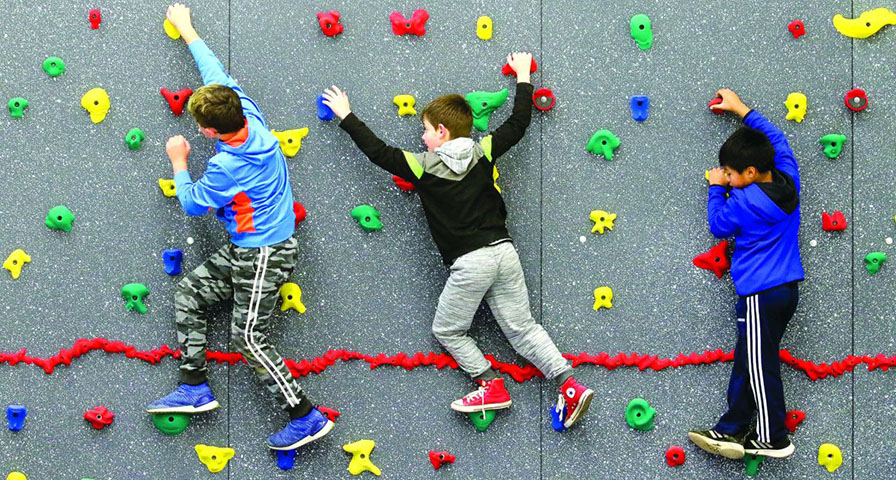Originally published Dec. 30, 2019 in the C&G News.
By Tiffany Esshaki
Grown-ups: If the sight of a scoreboard still makes you queasy and the screech of a whistle sends a shiver down your spine, you’re not alone.
But don’t worry, kids may be having more fun in their physical education classes now than you ever did.
School PE classes have changed in recent years. They’re less about competition and sport and more about just getting moving, however that suits each student.
“The goal is not only to give kids the chance to be active, but to understand why it’s important to be active,” said Derek Digiovanni, a physical education teacher at Greenfield Elementary School in Beverly Hills.
Over the years, he said, legislators have revamped curriculum standards for PE, in both positive and negative ways. The bad news is that, with so much stress on academics, there’s not much time for PE anymore. At Greenfield, kids get just 45 minutes a week for physical education.
The good news is that classes are now designed to be more inclusive. Gone are the days when less sporty students would be left behind to sit on the bench while others dominate the dodgeball court.
“I think the point of the lessons have evolved more,” Digiovanni said. “Not to say there wasn’t a focus on all kids (in the past), but we definitely try to tailor activities so they’re benefiting kids of all abilities, not just the most athletic.”
School districts have the most say in what PE class looks like, though state and federal legislation plays a small role too. Dr. Diane Golzynski, the director of the Michigan Department of Education Office of Health and Nutrition Services, agrees with Digiovanni that, at every level, the goal of physical education is to truly educate students on what role education should play in their lives in the future.
“Skills are focused on at the elementary level, with mastery of those skills and a shift to lifelong fitness activities at the middle school level (and above),” she said. “Things like overcoming barriers, finding activities they enjoy and can stick with. Healthy eating and nutrition are covered in health education.”
That’s not to say, though, that sports have been scrapped from the curriculum altogether. Games are a great way to get students engaged, after all, Digiovanni said.
“We have numerous units that we teach throughout the year; they’re each about four to six classes long,” he explained. “We might do soccer in the fall, then we’ll move into our throwing units, then into basketball and volleyball and racquet sports. After a daily independent warm up, which they’re accountable for on their own, we do a lot of activities and drill work using those skills. It’s kind of like a modified game where they can practice dribbling, passing, shooting. But it’s not just like a full game for the class.”
Another, more modern, way to keep kids interested in exercise is with technology. Some schools utilize heart rate monitors from time to time so students can see how well they’re performing and where they can improve their efforts.
“If their heart rate is really high, they know they’re accomplishing what they need to. If it’s low, they know they need to step it up a bit,” Digiovanni said. “We’re not really assessing fitness, but it does provide information to go home with them.”
Seeking IHT Spirit System information?





